#john mclellan
Text
John McLellan: Unconformity | Podcast
John McLellan talks about his new books set in the Scottish Highlands, Unconformity.

View On WordPress
0 notes
Text
Roman Holiday (1953)

Once again, we’re talking about an Audrey Hepburn film that at first, seems familiar. Like before, the details Roman Holiday gets right make it feel wholly new. The performances are excellent, the script is terrific, the laughs are big and the romance is palpable. This is one of the best romantic comedies ever made.
While visiting Rome, crown princess Ann (Audrey Hepburn) secretly leaves the embassy to get away from her royal duties for a night. While out, she meets and befriends Joe Bradley (Gregory Peck), a reporter who only recognizes her after he's gained her trust. He sets out to take her on a one-day vacation - an opportunity for him to get her unfiltered thoughts on the world and take the kind of candid photos the embassy would never allow.
See what I mean about a plot that sounds like we’ve seen many times? You have the rich girl and the poor guy unexpectedly crossing paths. He doesn’t know who she is, they spend some time together and then fall in love. How will the palace react when she returns but has left her heart behind and is now unwilling to proceed with that arranged marriage her parents set up? We’ve seen THAT story before. Roman Holiday is something different.
Roman Holiday often plays like a tour of Rome; a vacation you take along with the characters for the price of a movie ticket. We see the Spanish Steps, the Mouth of Truth and the Colosseum. We ride a Vespa scooter through the streets, dance on the riverside and have coffee in a charming outdoor cafe. Basically, you see what there is to see, you taste the food the city is known for, and get to experience its unique culture. It’s a series of small adventures that build up your interest in the characters. Initially a little bratty, Princess Ann shows a tremendous amount of growth as the story plays out, particularly during the end. Same goes for Joe, who’s a bit of a scoundrel at first. See, initially, Joe doesn’t want anything to do with Ann. He only gives her a place to sleep because he thinks she’s drunk (actually, she’s been sedated by her doctor after a fit). Come morning, he recognizes her and spots an opportunity. The tour is a ploy worth over $5000 to our unscrupulous reporter.
Audrey Hepburn is so good in the film you can’t believe this is the first time she had a significant role. This technically isn’t her first movie, but it’s the the one that “introduced” her. Gregory Peck is always bankable as a star so the surprise comes not from him, but from how well he plays off of her. Their chemistry makes the movie soooo complicated. You figure it’s only a matter of time before she finds out what’s going on. When she does, what will happen? If this was a movie made today, you’d be able to guess. With this one… you’re not so sure.
What makes the film’s ending unforgettable are the many laughs that dominate the middle. To sell his story, Joe has to get the help of his friend, a photographer named Irving (Eddie Albert). He has the tools, but how does Joe communicate to Irving to be quiet, and what shots he wants? With the many fish-out-of-water scenarios, Joe having to dodge the people he owes money to, many misunderstandings and plenty of funny situtations, there’s A LOT going on comedically. There’s just a lot going on overall, making the nearly two-hour running time fly by like it’s nothing.
I’m almost unsure whether I should recommend Roman Holiday to fans of romantic comedies. After this one, so many others just won’t cut it anymore. You’ll have seen what they’re attempting to do perfected. It’s a gorgeous film and just about every aspect of it exemplifies filmmaking at its best - it’s no surprise it earned 10 Academy Award Nominations. Everyone knows Audrey Hepburn from her role in Breakfast at Tiffany’s but THIS is the movie you’ve got to see. (September 17, 2021)

#Roman Holiday#movies#films#movie reviews#film reviews#William Wyler#Dalton Trumbo#Ian McLellan Hunter#John Dighton#Gregory Peck#Audrey Hepburn#Eddie Albert#1953 movies#1953 films
4 notes
·
View notes
Text
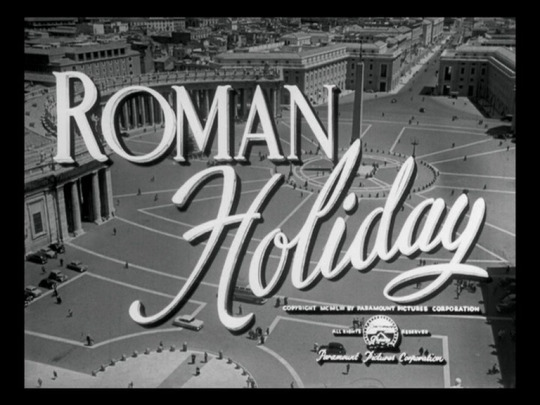
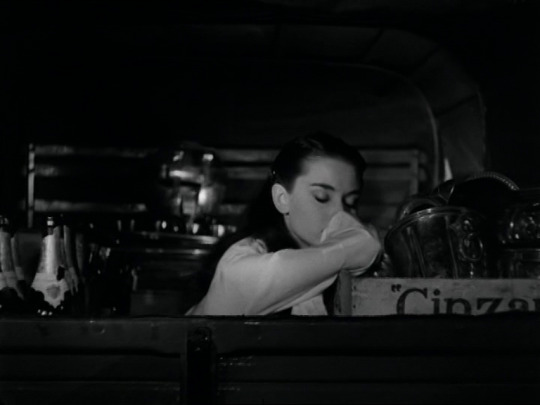
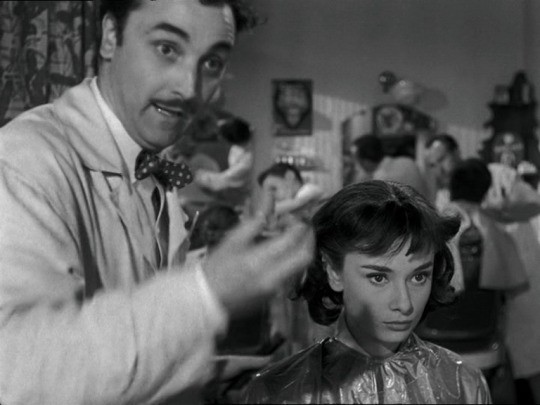

youtube
Roman Holiday (1953)
My rating: 6/10
#Roman Holiday#William Wyler#Dalton Trumbo#Ian McLellan Hunter#John Dighton#Gregory Peck#Audrey Hepburn#Eddie Albert#Youtube
1 note
·
View note
Text
Roman Holiday (1953) Review
When Princess Ann gets bored and restless she escapes her guardians and manages to live a little bit! Falling in love with American newsman Joe Bradley while in Rome.
⭐️⭐️⭐️⭐️
Continue reading Untitled

View On WordPress
#1953#Audrey Hepburn#Claudio Ermelli#Comedy#Dalton Trumbo#Eddie Albert#Gregory Peck#Harcourt Williams#Hartley Power#Ian McLellan Hunter#John Dighton#Laura Solari#Margaret Rawlings#Maurizio Arena#Paola Borboni#Paolo Carlini#Review#Rom-Com#Roman Holiday#Romance#Romantic Comedy#Tullio Carminati#William Wyler
1 note
·
View note
Text
LA CAZA DE BRUJAS III: LOS ACUSADOS

LOS DIEZ DE HOLLYWOOD

JOHN GARFIELD

ALBERT MALTZ

EDWARD DMYTRYCK (ACUSADO Y ACUSADOR)

EDWARD G. ROBINSON (ACUSADO Y ACUSADOR)

ZERO MOSTEL

BETSY BLAIR Y GENE KELLY

DASHIEL HAMMET ES CONDUCIDO A LA CARCEL

LILLIAM HELLMAN

” PODRIA RESPONDER, PERO ME ODIARIA MAÑANA POR LA MAÑANA”
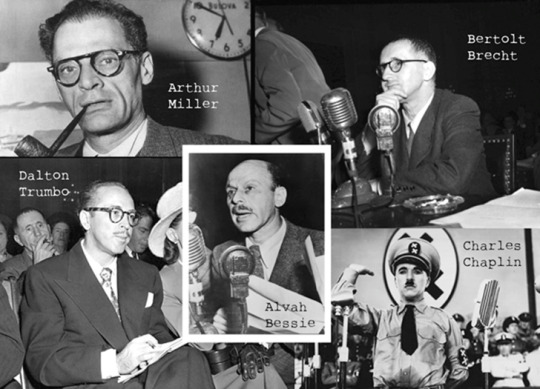
¿Es en la actualidad o ha sido usted miembro del Partido Comunista? Con esta pregunta se iniciaba el interrogatorio a que eran sometidos los llamados a declarar ante el Comité de Actividades Antinorteamericanas (HUAC). En 1954 cesaron parcialmente las actividades de ese comité, aunque no cesaron las represalias laborales para cualquier sospechoso de ideas liberales o progresistas. En esos momentos quedó establecida una lista de 324 culpables ¡de haber pertenecido a un partido político legal! de los cuales algunos sufrieron cárcel, pero todos padecieron una desafección social total hacia sus familias y lo que es peor quedaron proscritos como profesionales del cine y tuvieron que “buscarse la vida” en el más genuino concepto de la frase. Pero esta lista era mucho más amplia ya que se extendió a los “sospechosos” que también quedaron señalados y fueron ignorados por la industria del cine en esos años y los siguientes, prácticamente hasta el final de la década de los 50.
Entre todos ellos se produjeron crisis personales, familiares y hasta algún suicidio. Los menos pudieron incorporarse al teatro o a la naciente televisión. Alguno - como los guionistas – recurrieron al seudónimo para poder seguir trabajando en condiciones muy precarias. Muchos tuvieron que recurrir al exilio en Méjico o en Europa para continuar su carrera, como los casos de Dalton Trumbo, Albert Maltz, Hugo Butler, John Wexley, John Bright, Ben Barzman, Michael Wilson John Berry, Jules Dassin, Ring Lardner, Ian McLellan Hunter, Howard Koch, Joseph Losey o Charles Chaplin (el exilio de Orson Welles fue en gran parte por motivos económicos, aunque su salida de Estados Unidos le valió no ser acusado directamente).
Javier Coma en su Diccionario de la Caza de Brujas ofrece una completa lista de todos los “testigos inamistosos” u “hostiles” implicados en estos episodios. Tras 1947 la lista se amplió algo más en 1951 ya con el fanático McCarthy. Vamos a repasar en este capítulo algunos de esos nombres comenzando por los llamados Diez de Hollywood:
HERBERT BIBERMAN (1900-1971): guionista y director. Estuvo encarcelado durante 5 meses en 1950 y en 1954 dirigió la mítica película La sal de la Tierra, una producción semidocumental que narra una huelga de mineros y que fue boicoteada por los distribuidores. En 1969 dirigió la película antirracista Slaves.
ALVAH BESSIE (1904-1985): periodista y guionista. Participó en la guerra civil española en la Brigada Lincoln. Guionista de éxito, fue encarcelado por 10 meses y posteriormente trabajó en un club nocturno de San Francisco encargado de la iluminación y el sonido. En 1975 participó como actor en la película española España otra vez, de Jaime Camino.
LESTER COLE (1904-1985): fundador de la Asociación de Guionistas de Cine, escribió más de 40 guiones, entre ellos el de la película Nacida libre. Pasó 10 meses en la cárcel y posteriormente se exilió en Inglaterra y siguió escribiendo con seudónimo.
JOHN HOWARD LAWSON (1894-1977): periodista y guionista. Fue el primero en ser llamado a declarar a lo que se negó por lo que fue acusado también de desacato y condenado a cárcel. Tuvo que seguir su carrera firmando sus trabajos con seudónimo.
SAMUEL ORNITZ (1890-1957): dramaturgo, novelista y guionista, fue autor de numerosos guiones antinazis en la década de los años 30 y en la de los 40.
ADRIAN SCOTT (1911-1972): productor y guionista de cine y televisión. Encarcelado 10 meses. Su mujer también estaba en la lista negra y ambos usaron seudónimo hasta los años 60. Se exilió en Inglaterra donde trabajó como productor ejecutivo.
ALBERT MALTZ (1908-1985): dramaturgo, novelista y guionista. Ganador de varios premios por sus novelas ganó también el Oscar en dos ocasiones por documentales. Tras su paso por la cárcel pasó varios años en Méjico. Leyó una declaración ante el Comité en la que dijo “Preferiría morir a ser un vil americano que se arrastra ante hombres cuyos apellidos son Thomas y Rankin, pero que ahora llevan a cabo en Estados Unidos actividades como aquellas realizadas en Alemania por Himmler y Goebbels”.
RING LARDNER, Jr. (1915-2000): Guionista de gran éxito (ganó dos Oscar por La mujer del año y MASH). “Podría responder, pero me odiaría mañana por la mañana”: esa es la respuesta que Lardner dio en 1947 al HUAC por lo que fue acusado de desacato y condenado a un año de cárcel. Escribió varios años con seudónimo, pero luego pudo recuperar su trabajo plenamente a partir de 1965.
EDWARD DMYTRYCK (1908-1999):Con este director de prestigio de origen canadiense tuve dudas en cuanto a incluirlo en este capítulo o en el de los acusadores. Fue el único de los Diez de Hollywood que tras pasar por la cárcel terminó colaborando y en 1951 dio al HUAC más de 25 nombres de posibles comunistas. Esta postura le granjeó el título de traidor entre sus antiguos compañeros que le acompañó hasta su muerte con enfrentamientos públicos con algunos de ellos. Tras su rehabilitación su producción artística fue muy endeble. Antes de estos sucesos fue director de películas como Historia de un detective, Encrucijada de odios o El motín del Caine.
DALTON TRUMBO (1905-1976): el más conocido de los Diez de Hollywood. Director y sobre todo guionista de gran éxito y afiliado al PC norteamericano. En los años 40 era el guionista mejor pagado y tiene en su haber guiones como los de Espartaco o Éxodo. Tras pasar por la cárcel se amparó en los seudónimos para seguir trabajando y logró ganar 2 Oscar bajo nombres no reales en las películas: Vacaciones en Roma y El Bravo. Participó en la creación de la productora King Brothers que dio trabajo a los proscritos por el HUAC. Salió del anonimato cuando por fin pudo aparecer en los créditos de Espartaco gracias a la presión de Kirk Douglas sobre la productora.
Antes de morir nos dejó bajo su dirección una mítica película antibelicista: Johnny cogió du fusil.
LOS OTROS ACUSADOS:
ARTHUR MILLER: al conocido escritor y uno de los maridos de Marilyn Monroe le retiraron el pasaporte y fue condenado por desacato por no delatar a nadie. Fue un gran amigo de Elia Kazan hasta las delaciones de este y por ese motivo no lo volvió a tratar. Miller escribió la obra Las brujas de Salem en 1953 en alusión a la Caza de Brujas. Varias películas como Muerte de un viajante, Panorama desde el puente y Vidas rebeldes están inspiradas en sus obras.
JOHN GARFIELD (1913-1952): un gran y desgraciado actor (El cartero siempre llama dos veces entre otras películas). Llamado a declarar en 1951 se negó a dar nombres y se puede decir que ahí terminó su carrera Un año después fallecería de un ataque cardiaco. Garfield se convirtió en el símbolo de las víctimas de la Caza de Brujas.
EDWARD G. ROBINSON (1893-1973): uno de los actores más famosos del cine negro (Hampa dorada, Perdición). Cuando fue llamado a declarar renegó del comunismo y dio varios nombres, pero solo citó a los que ya estaban condenados. Le tuvieron retirado el pasaporte varios años y él trató de dar todas las muestras de patriotismo hasta con anécdotas chuscas como cuando siendo jurado en el Festival de Cannes puso una reclamación a la dirección por permitir que en Bienvenido Mr. Marshall una banderita norteamericana corriera bajo el agua de una calle hasta un sumidero o que se repartiesen prospectos anunciadores de la película con una reproducción de un billete de dólar con las imágenes de Pepe Isbert y Lolita Sevilla en vez de la de George Washington. Berlanga tuvo que ir a declarar a una comisaría y como consecuencia de estos incidentes… se quedó sin la Palma de Oro.
ORSON WELLES (1915-1985): uno de los más grandes directores de la historia del cine. Investigado por el FBI y figurando en algunas listas como comunista por su apoyo a causas de izquierda pudo evitar al HUAC por su autoexilio profesional motivado por problemas económicos.
MARTIN RITT (1914-1990):señalado como comunista, aunque siempre lo negó, la CBS lo despidió en 1951. Ritt es autor de La tapadera, una de las mejores películas sobre los hechos que estamos analizando.
ZERO MOSTEL (1915-1977): un gran actor de teatro y cine (Golfus de Roma) tiene un papel antológico en La tapadera. Negó pertenecer al PC y también se abstuvo de dar nombres.
JULES DASSIN (1911-1994): delatado por Edward Dmytryck se exilió en Francia donde continuó su carrera como director con películas como Rififí, La ciudad desnuda o Noche en la ciudad.
BETSY BLAIR (1923-2009):la actriz de Marty o de Calle Mayor y esposa de Gene Kelly no pudo entrar en el PC ya que no se le permitió para no comprometer a su marido. Ocupó la lista negra en los primeros años de la década de los 50 y trabajó en algunas películas europeas como la ya citada de Bardem.
CARL FOREMAN (1914-1984): productor y guionista. No quiso declarar ante el HUAC en el año 1951 y terminó huyendo a Inglaterra en la que siguió su carrera en películas como El puente sobre el rio Kwai.
LEWIS MILESTONE (1895-1980): director que, aunque no llegó a figurar en la lista negra fue represaliado por la industria por lo que tuvo que emigrar a Europa. Todo como consecuencia de haber dirigido en la época prosoviética la película La estrella del Norte, en 1943.
JUDY HOLLIDAY (1922-1965): actriz que testimonió en 1952 declarándose “estúpida por haber apoyado causas progresistas” aunque no llegó a denunciar a nadie, por lo que fue “blanqueada”, pero su carrera profesional se detuvo en seco. Previamente había conseguido un Oscar en 1950 por su interpretación en Nacida ayer.
AARON COPOLAND (1900-1990): compositor de música que ganó el Oscar por la partitura de La heredera. Había colaborado con Milestone en La estrella del Norte y por ese motivo cayó en desgracia.
DASHIEL HAMMET (1894-1961): uno de los grandes escritores de novela negra (El halcón maltés, La llave de cristal). Compañero sentimental de Lilliam Hellman pasó varios meses en la cárcel en 1951. Muy activo en el PC norteamericano. Tuvo que declarar en tres ocasiones: 1951, 1953 y 1955 y en todas ellas se negó a dar nombres.
JOHN HUSTON (1906-1987): actor y director de enorme prestigio (El halcón maltés, La jungla del asfalto) fue uno de los más activos en el Comité para la Primera Enmienda que se opuso al HUAC por lo que fue interrogado de forma privada. La prensa ultraderechista lo acusó de comunista en varias ocasiones por lo que se trasladaría durante una década a Irlanda de la que se haría ciudadano y luego a Méjico.
GENE KELLY (1912-1996): la gran figura del musical (Cantando bajo la lluvia, Un americano en París) para evitar una citación del HUAC por sospechas de actividades izquierdistas estuvo en Europa en 1952. Cuando regresó se puso en manos de un abogado que elogió sus actitudes anticomunistas y de esa forma ser blanqueado.
JOSEPH LOSEY (1909-1984): un gran director (El sirviente, Rey y Patria, El mensajero o Accidente). Perseguido por el FBI y avisado antes de que lo llamasen a declarar se trasladó a Europa. Un año después regresó y testificó voluntariamente a puerta cerrada, aunque no existe constancia de que revelase algún nombre. Al constatar que se le había colocado en la lista negra y no tenía opciones para trabajar volvió a Europa, a Inglaterra concretamente, donde completó una brillante carrera.
GALE SONDERGAARD (1899-1985): actriz ganadora de un Oscar y esposa de Herbert Biberman que vio interrumpida su brillante carrera cuando en 1951 se negó a contestar al HUAC cuando formaba parte de la lista negra de Hollywood.
FRITZ LANG (1890-1976): uno de los grandes directores de todos los tiempos. De origen vienés. Permaneció durante un tiempo en la lista negra hasta que diferentes cartas exculpatorias -sin delatar a nadie - lo rehabilitasen y de esta forma completar su carrera. Algunas de sus películas: Metrópolis, El vampiro de Dusseldorf, Los sobornados, La mujer del cuadro o Furia.
LILLIAM HELLMAN (1905-1984): escritora, guionista y autora teatral. Fue profesora en Harvard y Yale y llamada a declarar ante el HUAC en 1952 negándose a dar nombres. Fue autora de guiones como los de La loba, La calumnia o Julia.
BERTOLT BRECHT (1898-1956): el poeta y autor teatral fue también guionista de algunas películas (Galileo). Fue citado a declarar junto a los Diez de Hollywood y negó ser comunista. Ante el miedo a que fuese acusado posteriormente, unos días después se marchó a Europa ya que su nacionalidad era alemana y no regresó a Estados Unidos.
PHILIP YORDAN (1914-2003): productor y guionista de más de 40 películas (Johnny Guitar, Más dura será la caída, Rey de Reyes). Participó en la productora King Brithers reescribiendo guiones de otros compañeros que estaban condenados, pero según parece adueñándose indebidamente de la autoría de algunos. Al estar en la lista negra se marchó a España donde trabajó en varias superproducciones de Samuel Bronston como El Cid, La caída del Imperio Romano o 55 días en Pekín.
PAULETTE GODARD (1905-1990): actriz de gran éxito (Tiempos modernos, El gran dictador) a la que sus dos matrimonios con dos represaliados Ch. Chaplin y Burgess Meredith le valieron ser considerada una sospechosa y su carrera se vio frenada en Hollywood. En 1952 un abogado le consiguió la rehabilitación. A pesar de ello y sin encontrar trabajos adecuados se trasladó y se retiró en Suiza hasta su muerte.
ABRAHAM POLONSKY (1910-1999): novelista, guionista (Cuerpo y alma) y director (El valle del fugitivo). Incluido en la lista negra junto a su mujer, se negó a declarar ante el HUAC en 1951. Pudo dirigir muy pocas películas y algunos de sus trabajos están sin acreditar en otras. Participó en varios documentales sobre la Caza de Brujas en los últimos años de su vida.
FRANK SINATRA (1915-1998): actor (El detective), productor y posiblemente el cantante más conocido del siglo pasado (alguien escribió que cuando muriera Sinatra se habría acabado el siglo XX) fue acusado desde varios frentes por filocomunista. En 1960 quiso contratar a un guionista de los Diez de Hollywood para que escribiese un guion sobre el fusilamiento de un soldado norteamericano por deserción en la II Guerra Mundial lo que no pudo conseguir ante el escándalo en determinados medios de comunicación ultraderechistas. Fue uno de los fundadores del Comité sobre la Primera Enmienda que se opuso a la caza desde sus inicios. (Con sus luces y sus sombras – que también las hubo, como sus relaciones con la Mafia – Sinatra se mostró siempre como un tenaz antifascista. Durante una de sus estancias en España para ver a Ava Gadrner, en 1964, fue llevado a declarar tras un incidente en el Hotel Pez Espada de Torremolinos. Al ver la foto de Franco le dedicó varios insultos. Esto motivó que se le aplicase una fuerte multa y fuese expulsado de España dos días después).
CHARLES CHAPLIN (1889-1977): creo que no es necesario dedicar una línea a quien es un icono cultural del siglo XX y conocido por todos. Cuando estaba en Inglaterra en 1952 – tenía ciudadanía británica - se le impidió regresar a Estados Unidos donde había desarrollado toda su carrera ya que había sido acusado de filocomunista por sus películas Tiempos modernos o El gran dictador. La revancha suya fue rodar en 1957 Un rey en Nueva York, película menor en su filmografía, aunque no ausente de calidad y que es una crítica encubierta a la Caza de Brujas.
Es sumamente interesante el interrogatorio a que fue sometido en las investigaciones iniciales por el Departamento de Inmigración a instancias del FBI y que el propio Chaplin resumió de esta forma:
-"Una semana después recibí una llamada telefónica del Departamento de Inmigración para decirme que desearían formularme algunas preguntas. ¿Podían venir a mi casa? contesté. Vinieron tres hombres y una mujer; la mujer traía una máquina estenográfica. Los otros llevaban unas cajitas cuadradas que contenían, indudablemente, magnetófonos. El principal interrogador era un individuo alto y delgado, de unos cuarenta años, apuesto y astuto. Me di cuenta de que eran cuatro contra uno, y que debí haber hecho que estuviera presente mi abogado, aunque no tenía nada que ocultar. Los conduje al salón principal y la mujer llevó su máquina estenográfica y la colocó sobre una mesita. Los otros se sentaron en un diván, con los magnetófonos delante. El interrogador sacó un dosier de unos treinta centímetros de alto, que depositó cuidadosamente en la mesa que tenía junto a él. Me senté enfrente."
—Es Charles Chaplin su verdadero nombre?
- Sí.
- Algunas personas dicen que su nombres es…aquí mencionó un nombre de evidente sonido extranjero y que usted es originario de Galitzia.
- No. Mi nombre es Charles Chaplin, como mi padre, y nací en Londres, Inglaterra.
- Dice usted que no ha sido nunca comunista?
- Nunca. No he formado parte jamás de una organización política en mi vida.
- Usted pronunció un discurso en el que dijo «camaradas». ¿Qué quería usted dar a entender con eso?
—Exactamente eso. Busqué la palabra en el diccionario. Los comunistas no tienen la exclusiva de esa palabra.
— Ha cometido usted alguna vez adulterio?
— Óigame —le contesté—, si está buscando una argucia para echarme del país, dígamelo y arreglaré mis asuntos de acuerdo con ello, porque no deseo permanecer en ninguna parte donde se me considere persona non grata.
—Oh, no! —me dijo—; es una pregunta que se hace al tramitar todos los permisos para una nueva entrada.
—Cuál es la definición de «adulterio»? —pregunté.
- Significa “fornicaciòn con la esposa de otro hombre” – me dijo
- No, que yo sepa -le dije
- Si este país fuese invadido, lucharía por defenderlo?
- Con toda seguridad, quiero a esta Nación, aquí tengo mi hogar y aquí he vivido durante 40 años
- Pero Ud. no se ha hecho ciudadano americano.
- No hay ninguna ley en contra de eso. Sin embargo, pago aquí mis impuestos.
- Pero por que sigue las consignas del partido?
– Si Ud. me dice lo que son las consignas del partido y de qué partido podré contestarle si las sigo o no.
Estos son algunos de los ejemplos de los más de 400 que sufrieron la persecución durante la Caza de Brujas. Lo más lamentable es que fueron perseguidos por pertenecer a un partido político legal. Como dijo el propio Kirk Douglas, uno de los que luchó por acabar con esa represión: “Yo me sentí mal por esas personas. No estaban tratando de derrocar a su gobierno”.
3/7/2024
5 notes
·
View notes
Text

John Varvatos Artisan Spring 2009
Photo Alasdair McLellan
Model Andrew Smith
3 notes
·
View notes
Text
Six actors who's names share a common root
Hannah (12)
Jana Larell Glover, Anna Uzele, Hana Stewart, Annamaria Baranyai, Anita Gado, Hannah Lowther, Annabel Marlow, Anna Peller, Gerianne Perez, Analise Rios, Hannah Taylor, Anna Terpiłowska
Elizabeth (9)
Ellie Jane Grant, Izi Maxwell, Ella Burns, Bella Coppola, Izabela Pawletko, Analise Rios, Leesa Tulley, Elizabeth Walker, Ellie Wyman
Laurence (8)
Laura Dawn Pyatt, Lauren Byrne, Lauren Irving, Lauren Mariasoosay, Laura Blair, Lauren Drew, Loren Hunter, Lori McLare
Margaret (7)
Małgorzata Chrusciel, Meghan Corbett, Meghan Dawson, Meg Dixon-Brasil, Megan Gilbert, Maggie Lacasse, Megan Leung
Christos (7)
Kirsty "Zara" MacIntosh, Keirsten Nicole Hodgens, Cristina D'Agostino, Kristina Leopold, Christina Modestou, Kristina Walz, Krisztina Magyar
Helen (6)
Ellie Jane Grant, Elena Breschi, Ella Burns, Elena Gyasi, Aline Mayagoitia, Ellie Wyman
John (6)
Jana Larell Glover, Gianna Grosso, Jaina Brock-Patel, Janique Charles, Janice Rijssel, Lori-Jane McLare
Nicholas (6)
Nicole Louise Lewis, Nikki Bentley, Nikolett Gallusz, Collette Guitart, Nicole Kyoung-Mi Lambert, Nicole Lamb
Alexander (5)
Alexia McIntosh, Sasha Renae Brown, Alexandra "Zan" Berube, Aleksandra Gotowicka, Ji-sun "Lexie" Kim
Gabriella (5)
Gabbi Mack, Gabrielle Davina Smith, Gabriela Francesca Carillo, Gabriella Stylianou-Burns, Gabriella Boumford
Jasmine (5)
Jasmine Shen, Jasmine Smith, Jasmine Forsberg, Jasmine Hackett, Jaz Robinson
Julius (5)
Juli Horanyi, Giulia Marolda, Julia McLellan, Julia Pulo, Jillian Worthing
Adal (4)
Alicia Corrales-Connor, Alyssa Giannetti, Alize Ke'Aloha Cruz, Aline Mayagoitia
Amy (4)
Amy Bridges, Aimie Atkinson, Amy Di Bartolomeo, Kara-Ami McCreanor
Courtney (4)
Courtney Monsma, Courtney Stapleton, Courtney Bowman, Courtney Mack
Emil (4)
Amelia Walker, Emily Rose Lyons, Emily Harrigan, Emilia "Millie" O'Connell
Katherine (4)
Caitlyn De Kuyper, Kathryn Kilger, Caitlin Tipping, Kate Zulauf
Kayla (4)
Kala Gare, Khaila Wilcoxon, Kaylah Attard, Kayla McSorley
Monica (4)
Monika Nika Veres, Monique Ashe-Palmer, Janique Charles, Mónika Horváth
Sophia (4)
Sophie Golden, Sophie-Rose Middleton, Fia Houston-Hamilton, Sophie Isaacs
Abigail (3)
Abigail Sparrow, Abbi Hodgson, Abby Mueller
Aenor (3)
Ellie Jane Grant, Ella Burns, Ellie Wyman
Danielle (3)
Danielle Steers, Danielle Mendoza, Danielle Rose
Eireann (3)
Aryn Bohannon, Erin Palmer Ramirez, Erin Caldwell
Hayley (3)
Haley Izurieta, Hailee Kaleem Wright, Hailey Lewis
Laura (3)
Laura Dawn Pyatt, Laura Blair, Lori McLare
Lucius (3)
Lucy Aiston, Lucia Valentino, Lucinda Wilson
Natalie (3)
Natalie Pilkington, Natalie Paris, Natalia Kujawa
Oliver (3)
Olivia "Liv" Alexander, Olivia Donalson, Oliver Wickham
Rhiannon (3)
Rhiannon Bacchus, Rhiannon Doyle, Rhianne-Louise McCaulsky
Sarah (3)
Kala Gare, Sadie Hurst, Sarah McFarlane
Theodore (3)
Terica Marie, Didi Romero, Dóra Csonka
Agnes (2)
Inez Budd, Agnieszka Rose
Aisha (2)
Aiesha Naomi Pease, Aisha Kardffy
Alan (2)
Lana Zoe Jensen, Alana M. Robinson
Amanda (2)
Amanda Lee, Amanda Lindgren
Ashley (2)
Ashlee Waldbauer, Ashleigh Weir
Brian (2)
Brianna Brito Mooney, Brianna Javis
Cassandra (2)
Cassandra Lee, Cassie Silva
Cathassach (2)
Casey Esbin, Casey Al-Shaqsy
Ceallach (2)
Kelly Sweeney, Kelly Denice Taylor
Cennetig (2)
Kennedy Carstens, Kenedy Small
Charles (2)
Carly Mercedes Dyer, Caroline Siegrist
Chelsea (2)
Chelsea Lorraine Wargo, Chelsea Dawson
Chloe (2)
Chloe Zuel, Chloe Hart
Eloise (2)
Eloise "Ellie" Sharpe, Eloise Lord
Eric (2)
Terica Marie, Erika Herceg
Grace (2)
Grace Mouat, Grace Melville
Hadrian (2)
Adrianna Glover, Adrianna Hicks
Henry (2)
Harriet Watson, Harriet Caplan-Dean
Holly (2)
Holli' Conway, Holly Musgrave
Jennifer (2)
Jennifer Caldwell, Ji-woo "Jennifer" Kim
Jessica (2)
Jessica Niles, Jessica "Jessie" Bodner
Ludwig (2)
Lou Henry, Rhianne-Louise McCaulsky
Maia (2)
Maiya Quansah-Breed, Maya Christian
Martha (2)
Marta Burdynowicz, Marta Skrzypczynska
Mary (2)
Annamaria Baranyai, Marilyn Caserta
Matilda (2)
Maddison Bulleyment, Maddison Firth
Melissa (2)
Melinda Porto, Melissa J. Ford
Rachel (2)
Rachel Rawlinson, Rachel "Rae" Davenport
Renatus (2)
Renee Lamb, Brene "Bre" Jackson
Shannon (2)
Shannen Alyce Quan, Su-jeong "Shannon" Pae
Sidney (2)
Cydney Clark, Sydney Parra
Taylor (2)
Taylor Iman Jones, Taylor Pearlstein
Victor (2)
Victoria "Vicki" Manser, Viki Singh
18 notes
·
View notes
Text
Emotional Night For The Oilers' Captain and Family


Last night was an emotional night for McDavid, his best friend and their families as it was the anniversary of Y/n's father's passing. The Edmonton Oilers dedicated their win against Minnesota Wild to McDavid's best friend's father, Sergeant John L/n.
From what we know, Sergeant John L/n was killed in action when Y/n was only 9 years old. Y/n posted a tribute picture, with the caption " I love you Dad. I miss you so much. Hope you're proud of Y/b/f/n, Con and I ❤️" which made it seem like Sergeant L/n was a father to not only his daughter but a father figure to McDavid and Y/b/f/n who all posted pictures in memory of the late Sergeant.
The night was filled with McDavid's tributes to the late Sergeant. As the team first stepped onto the ice, they all skated past the corner the Y/l/n siblings, Y/n and her sister Y/s/n, McDavid's Parents, Y/b/f/n (Girlfriend of Leon Draisaitl), Zara Strome and Clove Bennet were seated, slamming into the glass as a show of their support to the family, led by McDavid and Draisaitl. During the national anthem, you could see McDavid staring into the crowd, in the direction of his best friend, with tears in his eyes. Once the last note of the anthem played McDavid did the sign of the cross before kissing his hand and raising it in acknowledgement, looking up to the ceiling. As the players skated to their positions, his linemates patted his back in support.

After the first period, Oilers were behind Wild by one goal. The second period saw the game tied, with Draisaitl scoring another in the last 2 minutes of the period. With an intense third period halfway done, McDavid showed everyone what he was made of by sending a slapshot into the net, giving the lead to the Oilers. When he did his celly, he kissed his hand and pointed to the sky before returning to play. The celebration caused Y/n to tear up, holding hands with her sister and McDavid's mother. Once the final siren went, the Oilers all celebrated as a team before doing the same thing as they did before warm-ups. One by one, the players bumped the glass. Finally, McDavid bumped the glass before placing his hand on the glass, allowing Y/n to do the same. Y/b/f/n and Leon Draisaitl stood by their friends before the team gathered around their captain to celebrate their win.
Postgame interview with McDavid saw him talk about how close he was with his best friend's father and why he dedicated tonight to the father. He stated that he was glad to be able to dedicated tonight to the late Sergeant as he also helped McDavid become who he is as a person and as a player. From what it seemed, he was devastated by the sudden passing of the Sergeant. Though his interview was cut short as McLellan walked into the locker room, followed by a crying L/n.
McDavid didn't say a word before standing from his position in his locker, heading straight for the crying girl. The media, the ones still left in the locker room, were asked to leave before the rest of the grieving family and friends entered.
Our thoughts and prayers go to the L/n family and friends on the anniversary of the late Sergeant John L/n's untimely passing. We know that he would be proud of how far Y/n and Connor have come in life.

TAG LIST:
@penny4yourthoughts @mp0625 @hischierhaze
#connor mcdavid x reader#connor mcdavid insta edit#connor mcdavid imagine#connor mcdavid#edmonton oilers imagine#nhl fanfiction#nhl fic#nhl imagine#swissboyhisch social media fics#social media imagines#swissboyhisch insta edit#nhl insta edit#insta edit#insta fic#swissboyhisch
26 notes
·
View notes
Text
The fascinating life and mysterious death of Helen M.T. Ayres
By C.J. Thompson
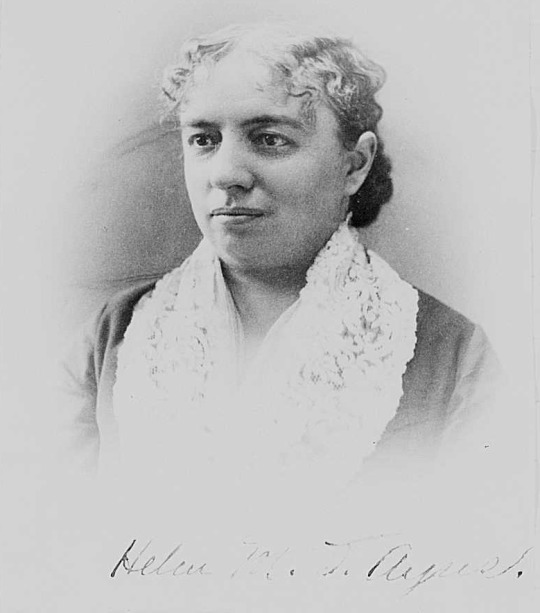
After reading the story, “Clippings from Fanny’s Bible,” written by M. Laura Race in the March /April 2023 issue of Yates Past, I was compelled to do more research on the mysterious circumstances surrounding the death of Miss Helen M. T. Ayres. The newspaper clipping described that Helen hadn’t been seen all day on Thursday, January 26, 1899. The neighbors became very concerned, as she hadn’t appeared for her usual meal at the Knapp House.
Once authorities obtained a key from the man who had worked on her furnace, they – along with Mrs. Bower, a neighbor – searched her home without success until one of them opened her old Saratoga trunk, which she apparently let her Angora cats sleep in (with the lid opened). They found Helen in the trunk kneeling with her head on the tray cleat with a bottle of chloroform that was opened near her face. Was this a murder or a suicide? Who was the man who took care of her furnace?
She was born Helen M. Turner on October 11, 1840, in Ovid, Seneca County to John Turner and Susannah Ayres. John and Susannah died in 1842 in Elmira, Chemung County. One of Susannah’s older half-brothers, Lewis Smalley Ayres, and his wife, Esther McLellan, adopted Helen, as they had no children of their own. Lewis had lost his mother and another sibling during a difficult childbirth when he was just 3 years old, and his mother was only 19 years old.
In order to better understand all of Helen’s amazing achievements for a woman living in the 19th century, I delved into the lives of her adoptive parents. Lewis was born on January 29, 1811, in Trumansburg, Tompkins County to Nathaniel Ayres and Susannah Coddington.
At the age of 17 in 1828, he went to Ithaca to learn the hatter’s trade. He married Esther McLellan in 1832, and they settled in Penn Yan, where he purchased stock in the hat business of Eleanor Jenkins. Lewis later sold his shares in the hat store for health issues to Lewis B. Mandeville.
In 1835, Lewis and William Griffin established a dry goods business and he worked there for about a year. His next venture, in 1841, was a hardware business with partners William Whitney and Oliver Stark on the corner of Main and Elm streets. Subsequent to the dissolution of the partnership before 1850, Lewis created an insurance agency, where he worked for the remainder of his life. He was also active in political affairs and held a high position in the Masonic order.
Interestingly, the hardware store now known as Pinckney Ace Hardware remains in the same location where a hardware business first began more than 180 years ago. A fire in March 1985 did extensive damage to the building, but the building was salvageable and has been renovated. The hardware business in this location has had numerous partnerships that served Penn Yan and surrounding areas, including Armstrong & Gage, Armstrong & Hollowell, and Hollowell & Wise. Sons would either purchase their father’s shares or inherit their shares when they died.
Between 1836 and 1841, Lewis also held various town offices, being a village trustee for Penn Yan and a superintendent of the Crooked Lake Canal, and he worked under the Pierce and Buchanan administrations for eight years. Lewis died at home on May 14, 1876 at age 66. Helen had been his assistant early on and then became his partner in the insurance agency for numerous years and now assumed control of the business, located on the Knapp House block on Main Street.
Esther Ayres was born in 1810 in Johnstown, Fulton County. Her parents were Archibald McLellan and Isabella McIntyre. I traced Isabella’s maternal side back to 1492 to her 10th great-grandfather, John MacIntyre, who was born in Strathclyde, Scotland. All of the men in this line were chieftains of Clan MacIntyre. Isabella and Archibald were both born in Scotland and married there at the young age of 16. According to Esther’s obituary in the Penn Yan Express, dated September 17, 1879, her parents headed to America shortly after marriage. It is unknown if Esther displayed any attributes from her Scottish ancestors. The port of Glasgow, Scotland was the starting point of Helen’s European trip itinerary in the summer of 1888, onboard the S.S. Furnessia of the Anchor Line.
Did Helen perceive education and hard work exemplified by her father as a key to her success or did social discrimination lead Helen to attend college? Lewis was dedicated to his family and the small community of Penn Yan. Helen first appeared with her parents in the 1850 U.S. Census, living in Penn Yan. Esther was listed as a homemaker in the Census from 1855 to 1875. It is mentioned in Esther’s obituary, dated September 10, 1879, that she had become an invalid in her later years. Three different servants were also listed as living in the household between 1860 and 1875.
Helen was a woman ahead of her time; she attended Elmira Female College from 1855 to 1859 and was one of 17 women in the first graduating class. She was only 15 years old when she started classes there. Being first in alphabetical order, Helen was handed the first diploma. Helen later presented her diploma back to the college as a gift, and it now hangs in the College Archives.
Elmira Female College was founded as a college for women in 1855, and it is the oldest existing college in the United States granting degrees to women equivalent to those given to men. Helen, along with other women of her class, would have lived in the first college building known as Cowles Hall. The women would also attend classes and dine there.
In the Troy Weekly Times, dated July 26, 1856, an article describes a fire at 212 Liberty St. in Penn Yan and how 15-year-old Helen M. T. Ayres was badly burned. Fire ignited by fluid in a lamp consumed her dress and burned her flesh. William Gaumann, of Leroy, was there and burned as well. Given the time frame, Helen must have been home from college on summer break. Helen did not let the burns stop her from attending the Fall 1856 semester at Elmira female College.
The article is brief and doesn’t give details on the severity or where on Helen’s body she was burned. This could be another clue that may have played a role in Helen’s death. In those days, it was common to prescribe chloroform to treat pain.
It was exciting to view a photograph of Helen on FamilySearch. The following excerpt is from the original copy of her passport written by Helen, dated June 21, 1888 in Penn Yan: “Enclosed please find application for a passport. Our trip will include Scotland, England, Ireland, Wales, France, Germany and Switzerland. As I could not give a very description of myself, I enclose a photograph from what of myself, so that you will be able to file the passport more intelligently. Please return at once as we sail next week, signed Helen M.T. Ayres.”
She had also included money for her friend and neighbor, Miss Helen Baxter, to accompany her on this voyage. Helen and her friend, Helen Baxter, were two of the 207 passengers aboard the S.S. Furnessia. It appears Helen either jotted this note hurriedly or maybe it was a sign of an underlying health issue that would return later down the road.
Helen did not let her rural upbringing deter her from attaining her goals. She was only 5 feet tall and wanted her voice to be heard. Helen is not listed in the U.S. Federal Census for Penn Yan from 1860 to 1870. She reappears in 1875.
In a letter dated February 6, 1955, Sidney E. Ayres, of the Penn Yan Printing Company and editor of The Chronicle-Express, wrote to Mr. Barber of Elmira: “Helen had apparently taught and was a preceptress in one or more southern schools for about 10 years after graduation, according to a pile of letters from her former pupils. Family legend tells that the feeling ran so high against her as a Yankee teacher, at one time that she was sent home through the lines by a Confederate gunboat and transferred under a flag of truce to a Union gunboat on the Mississippi, I presume.” Although Sidney E. Ayres, a relative of Helen’s, never found any proof of that happening.
It is interesting to note that Helen and other family members – Stephen B. Ayres Jr., his wife, Harriet, and son Malcolm claim that they were all born in England, in the 1892 U.S. Census. Was it possible for all of them to be hiding from someone? If so, who?
Helen was actively involved with her alma mater after graduation and took many trips with friends and students attending Elmira Female College. One such trip was documented by Montreal Printing and Publishing, dated 1871. On this trip, passengers would travel on the Northern Central Railway as well as the Royal Mail Line of steamers. The tour included the Hudson River; Trenton Falls; Toronto, Ontario; Montreal, Quebec; the Thousand Islands; and the St. Lawrence River.
Like her father, Helen was an active participant in her community. Among her many achievements, she served not only on the board of the Penn Yan Public Library, which was founded in 1895, but also was the first librarian there. She was one of the founders of the 19th Century Club. Club members took many trips and one of their favorite places to go was Lake Luzerne. Helen hosted numerous lawn parties that included members along with their children at her home at 212 Liberty St. in Penn Yan.
Her house was located next to where the Michael Sterns Clothing Factory once was, and the house was demolished in 1956 in order to accommodate a much-needed expansion for the Michael Sterns Clothing Factory. Aldi is there now.
In April 1873, Sibyl, Elmira Female College’s literary magazine, stated, “We learned that Helen M. T. Ayres, is at present engaged in writing a book.” Helen purchased a Remington typewriter in December 1884 in Syracuse according to an article in the Yates County Chronicle. The Remington typewriter was manufactured by gun makers E. Remington and Sons, of Ilion, in 1874.
The Shakespeare Club was another club Helen was active in, and according to various newspaper articles she went from secretary in October 1883 to president at the December 9, 1898, meeting. The club meetings were held at different members’ homes. According to her obituary, she had sent out notes the day before her questionable death, assigning members parts for the next meeting on the second Friday of every month.
Why would Helen send out notes for the Shakespeare Club on the day before she was found “possibly positioned” in her Saratoga trunk? According to witnesses, she had gone to supper on Wednesday evening, and by all appearances seemed to be her normal, lighthearted self. However, she did purchase a 6-ounce bottle of chloroform earlier in the day. Who was the chloroform for?
In the past, known by her closest family and friends, Helen had purchased chloroform from the local druggist to provide her treasured Angora cats – who were very sick and had no hope of surviving – a more tranquil way to pass. On her death certificate, the Manner of Death was documented as “Chloroform Administered by herself.”
How did the police and possible witnesses of Helen come to that conclusion? There surely must have been an inquest. Given the year of the incident, Helen’s house may have not been secured as a potential homicide site. Those who walked into the home and touched things in search of Helen may have contaminated any evidence.
It is also mentioned in her obituary that there had been a handkerchief saturated with chloroform on the nightstand bedside Helen’s bed along with a smaller container of chloroform. Were these items placed there specifically to throw the authorities off the possibility of murder?
Furthermore, there had been what appeared to be a slight irritation on Helen’s face as she was lifted from the Saratoga trunk and placed back on her bed. According to those who were present, her bed looked as though she had been in her bed prior to the trunk.
Neighbors had mentioned that before her untimely death, she had suffered a severe attack of the grippe, commonly known today as influenza, and that it had left her weak and suffering from insomnia. Chloroform can make an individual sleepy quickly, but how long they sleep depends upon how much of the chloroform they were exposed to. Is it possible that Helen neglected the power of this drug?
The Penn Yan community had lost an intelligent and vibrant individual who by all accounts was happiest when helping others. Family, friends, and business acquaintances alike were dumbfounded as to why Helen M. T. Ayres would end her life in such a matter when all circumstances gave the impression of her going about happily as she would any day.
Nothing in her will, dated and signed on May 31, 1893, seems out of the ordinary. She listed items she wanted to go to specific family members and friends. At the time of her death, the value of personal property did not exceed $2,500. The last sentence in her will reads, “I do this in token of affection, and as a recognition of their affection for me, believing as I do that they, better than any other living persons, love me.”
Her obituary was in the Yates County Chronicle and the British Whig of Kingston, Ontario, Canada. Helen was mentioned in the Chronicle, dated February 1, 1899, by other members of the 19th Century Club: “Our dear friend was kind, generous, thoughtful for each member-the perfect embodiment of unselfishness.”
Although my research on Helen M. T. Ayres is finished, I am fascinated by all that she accomplished in her life. The tenacity that she had challenged her to do things that most women would not have dared to do during that time period. I am now able to put her story to rest, but I will always wonder whether she truly did administer the chloroform herself.

#historyblog#history#museum#archives#american history#us history#local history#newyork#yatescounty#pennyan#helenmtayres#death#murder#suicide#accident#chloroform
2 notes
·
View notes
Text
Tagged by @flame-of-tar-valon to tag 9 people to get to know better
three ships: those 2 lesbians (Sissix and Rosemary) from Long Way to a Small Angry Planet; Gideon and Harrow; Hiccup and Astrid bc I gotta be loyal to my roots
first ever ship: oh jeez, probably Lessa and F'Lar from the Pern books
last song: Heat by Coach Kit
last movie: I think it was John Wick 2
currently reading: In the Shadow of Lightning by Brian McLellan
currently consuming: very stale water that's been on my desk at least a couple of days
currently craving: blueberry muffin
I tag @ohboywonder @maurice-alpaca and anyone else who wants to
4 notes
·
View notes
Photo

One last look at the B&M tomahawk by Iron John and Stephanie of Iron Tree Forge. Artist copy of famous Butler and Mclellan Tomahawk from the Revolutionary War. For history and details of construction here's the blog post! Enjoy! https://www.irontreeforge.com/post/butler-and-mclellan-tomahawk #artofweapons #tomahawk #pipetomahawk #historicalweapons #armsandarmor #toweroflondon #revolutionarywar #wartrophy #battleofquebec #contamporymakers #18thcenturyartisans #historicalart #historicalreproduction #butlerandmclellan #handforgedtomahawk #quillwork #sinew #18thcentury https://www.instagram.com/p/CpEKq7Bs9Jr/?igshid=NGJjMDIxMWI=
#artofweapons#tomahawk#pipetomahawk#historicalweapons#armsandarmor#toweroflondon#revolutionarywar#wartrophy#battleofquebec#contamporymakers#18thcenturyartisans#historicalart#historicalreproduction#butlerandmclellan#handforgedtomahawk#quillwork#sinew#18thcentury
3 notes
·
View notes
Text
John McLellan: The Faultline | Podcast
John McLellan talks about his romantic novel set in a stunning landscape.
Sometimes a landscape can cast a spell on you, drawing you to it and leaving you changed forever. In John McLellan’s new novel, The Faultline, he charts the experiences of a group of young people whose lives are changed inexorably by the time they spend in the wilds of the the Scottish Highlands. A coming of age story, this novel is about love and life, set in a bold, uncompromising, ageless…

View On WordPress
0 notes
Text
The God of the Woods | Liz Moore | Published 2024

Early morning, August 1975: a camp counselor discovers an empty bunk. Its occupant, Barbara Van Laar, has gone missing. Barbara just isn't any 13-year-old; she's the daughter of the family that owns the summer camp and employs most of the regions residents. And this isn't the first time a Van Laar child as disappeared. Barbara's older brother similarly vanished fourteen years ago, never to be found.
As a panicked search begins, a thrilling drama unfolds. Chasing down the layered secrets of the Van Laar family and the blue-collar community working in its shadow, Moore's multi-threaded story invites readers into a rick and gripping dynasty of secrets and second chances. It is Liz Moore's most ambitious and wide-reaching novel yet.
Barbara Van Laar is missing from her cabin at the camp which rests on her family's property in the Adirondacks. Barbara, 13, requested to attend after lashing out at her parents, causing them great strife, which was agreed upon by TJ Hewitt, the camp's director and groundskeeper, and more importantly, family friend. TJ's father was once the camp director, but due to time and age, is no longer able to look after himself.
The bad thing is is that Barbara's disappearance isn't the first to happen at Camp Emerson, nor from the Van Laar family. In 1961, during the Van Laar annual Goodbye Fly party held at their estate, Bear Van Laar, Barbara's older brother, went missing prior to going on a hike with his grandfather and has never been seen or heard from again.
For now, the local BCI are in the lead of the investigation, including one of the investigators from Bear's disappearance, as well as brand new investigator Judyta "Judy" Luptack, the only daughter of a traditional Polish family that lives two hours away. Alice, Bear and Barbara's mother, has never been the same after Bear's disappearance, though her relationship with her daughter was nothing like that of with her son, and essentially Barbara was conceived as a way to "replace" the son that she had lost.
A local man was pegged as the person who had abducted and murdered Bear, due to some evidence found while searching for him in the woods. But, while awaiting questioning, Carl Stoddard had a heart attack and died, going into death with people believing that he had killed the young 8-year-old boy. His wife, Maryanne, has spent the last several years combing the woods to exonerate her husband posthumously, even earning herself the nickname in a scary story told amongst the campers at Camp Emerson as Scary Mary.
Judy works hard, harder than the others, in order to figure out what happened to Barbara. Theories are thrown about, including that Barbara had some sort of inappropriate relationship with TJ Hewitt, which she denies, claiming that Barbara is like a daughter to her, the closest thing she'll have to a child of her own; that she was involved with John Paul McLellan, Jr., the son of the Van Laar's lawyer, slated to take over the bank the Van Laar's run since Bear isn't there to take it over; and that she had snuck in boyfriends to a former fire lookout building set atop the mountain.
John Paul himself is involved with Louise Donnadieu, a counselor at the Camp, the very counselor in charge of Barbara and the rest of the Balsalm Cabin. Louise is a person of interest in her disappearance, as told to the investigators by John Paul himself, despite their "engaged" status. But, John Paul is found with evidence in his trunk leading that he had something to do with her disappearance himself.
In the end, with the help of alleged serial killer Jacob Sluiter, whose own family once owned the very property the Van Laar's now own, explains after he is apprehended after he had escaped from prison. While originally hiding from the police in 1961 during the time of Bear's disappearance, he saw someone carrying the body of a small boy, eventually leading them to his body on the other side of the lake. Understanding now that it was locals involved in the boy's death, Judy goes to the one person she hasn't spoken to yet: Vic Hewitt, TJ's father.
Hidden away in the abandoned slaughter house on the property, Vic's mind isn't what it once was, therefore Judy hears the truth from TJ herself: back in 1961, Vic had been in charge of the camp at the time, and TJ had been around 14 years old. Alice, in a moment of drunkenness, wanted to go out on a boat ride in the lake on the property, wishing to take Bear with her. Bear is stopped by his grandfather, who says they're going on a hike. But Bear defies his grandfather's wishes, and goes to find his mother. After a storm comes in, their boat capsized and Bear drowns accidentally after being hit in the head and Alice being unable to help him.
With the help of Peter II and Peter III, Vic takes Bear's body and buries it away, which was witnessed by Sluiter. The Peter's and McLellan's are apprehended, but Alice won't receive any sort of punishment due to the statute of limitations. Louise also helps point them in the direction of the possibility of where Barbara is.
TJ's family has a cabin about 2 hours north on an island, and with TJ's help, Barbara was able to get away from her family's issues and is going to take care of herself on the island, with TJ coming back to give her supplies when she is able to get away. Judy is able to find her, allowing her to remain there out of the shadow of the Van Laar family.
0 notes
Text
Home Renovations Contractor Near Me
Find the best home renovations contractor near you. Our team is dedicated to delivering exceptional quality and craftsmanship for all your renovation projects, big or small.
1 note
·
View note
Link
0 notes
Text

"STOLEN TIRES FOUND UNDER PILE OF COAL," Toronto Star. May 11, 1943. Page 31.
---
John Wheeler and Frank Dunn Admit Stealing Soldier's Property
----
"SERIOUS," SAYS CADI
----
County Police, Court, County Buildings, Magistrate Keith.
"This is a very serious offence," said Magistrate Keith, remanding in custody until Thursday for sentence, John Wheeler and Frank Dunn who pleaded guilty of theft of four-car wheels, tires and tubes and a car radio.
Sgt. Wilfred McLellan of the Scarboro police said the accused men removed the tires and radio from a car owned by Ralph Butwell of the Canadian Army. The car was parked in the yard at the rear of the owner's mother's home. Two of the tires McLellan explained were sold for $25. but have since been recovered. The other tires and radio were found covered by a pile of coal in a garage at the rear of a house occupied by one of the accused men, the officer said.
A PUBLIC MISCHIEF
----
B Police Court, City Hall. Magistrate Browne
Appearing before Magistrate Browne. George Gosden, 30, of Merriton. Ont., pleaded guilty to a charge of being a public mischief.
"Accused, from out of town, visiting at 238 Queen St. E., loaned his car to three men staying at that address on May 2 and the following day when they informed him they had been chased by police and the car wrecked in Rosedale ravine, he went to No. 4 police station and reported it stolen," said Detective A. Morrison,
"Why did you do this?" asked His Worship.
"I wanted to get back home to work without any trouble." said Gosden. "I am married and have three children to support. I only Icarned since this happened what. kind of people I lent the car to."
"I will remand you to May 18 for further investigation." said His Worship.
"You will go to the penitentiary for two years," Magistrate Browne told Walter Cummings when he appeared for sentence on a charge of theft of cash and cheques the property of National Grocers. "You have a bad record," said the court.
"I was in the army for two years." said Cummings. "And were in jail 10 days in 1942," added the bench.
"It takes no brains to make a fool of yourself," Magistrate Browne told John Tomlinson, 17, to whom he gave suspended sentence and probation for one year on a charge of auto theft.
Tomlinson was jointly charged with a juvenile who was also given suspended sentence and probation for a year.
Roy Frederick Winterfield, charged with having burglars' tools in his possession, and the theft of a license marker, elected trial by jury and was committed for trial.
Constable Cavanagh testified that early on May 3, with Constable Graham, he saw accused sitting behind the wheel of a car at Yonge St. and Castlefield Ave. Investigation disclosed a U.S. license plate in the car and an Ontario license on the car. Winterfield claimed the ear was his father's and that "jimmy" found in the trunk was used by his father at work. He was wearing a pair of gloves, Cavanagh testified.
L. J. Lambert. Jr., a United States citizen, living in Hamilton and travelling on war work between the two countries, testified that his car had been stolen the previous evening when he had left it for less than two minutes to buy papers. He had recovered it from Toronto police the next day. The bar found in his car was not his, he testified.
L. H. McKay, York township, testified that his license plate, later found on Lambert's car, had been stolen that night from outside his home.
"That will be sufficient for a committal," ruled the court.
LEFT, BUT CAME BACK
---
"D" Police Court, at City Hall, Magistrate Woodliffe.
Before Magistrats Woodliffe in "D" police court today, Samuel Donerchowski pleaded not guilty of careless driving and failing to remain at the scene of an accident, and guilty of having liquor in an illegal place.
"I saw the car leave the scene. of the accident and took the license number." said Clayton Lang. "Police went away because the car and driver were gone. Accused came back and so did the police."
"The second time we arrived," said P.C. Wheeldon, "accused's car was parked about 60 feet from the scene of the accident. We found two bottles of beer in his car."
"I feel that this man can be given the benefit of the doubt in regard to the failing to remain charge," said Magistrate Woodliffe. "I am imposing a fine of $25 and costs or 30 days for careless driving and recommend that his license be suspended. On the liquor charge he will pay $10 or one month."
WAS TOO FORCEFUL
---
"C" Police Court, City Hall, Magistrate Prentice Ben Rosenberg pleaded not guilty to a charge of assaulting Margaret Nelson.
"My girl friend and I were looking at a car on Spadina Ave.," complainant told Magistrate Prentice. "This man looked out of a window and called me a name. Then he came down and hit me in the face."
"They looked suspicious to me," said Rosenberg. "I had a flag and doo-dad on my car, and the Nelson woman stood on the running board and tried to pull down the doo-dad. I came down on the street and they came at me and tore my shirt to shreds. I got socked in the eye. I hit the Nelson woman and pushed them away."
"I think more force was used than necessary," said the court, convicting and fining accused $10 or 10 days.
#toronto#police court#scarborough#car theft#car thieves#stealing from cars#burglars' tools#license plates#stolen car#stolen radio#public mischief#suspended sentence#kingston penitentiary#sentenced to the penitentiary#probation#fines or jail#assaulting a woman#excessive force#canada during world war 2#crime and punishment in canada#history of crime and punishment in canada
0 notes